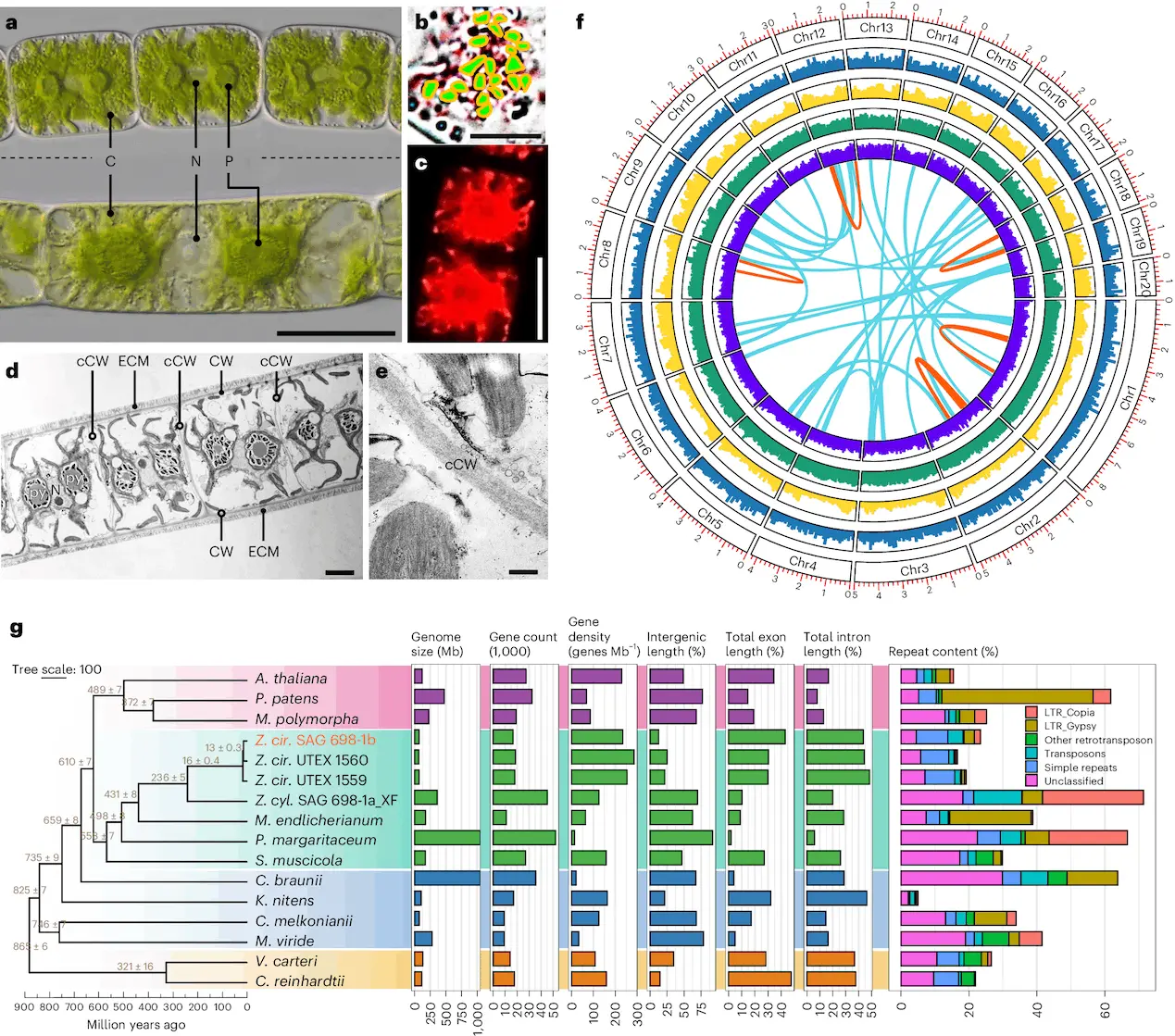Have you ever wondered how those dense jungles and tall trees appear? It began with a leap from the water, a colonization attempt by our plant forebears more than 550 million years ago. But how could these marine organisms have acquired the necessary adaptations for living in such an arid environment? — A recent publication in Nature Genetics published by researchers from the University of Nebraska-Lincoln may help us better understand this extraordinary event of evolution. Scientists are now working on assembling a genetic toolkit that enabled these changes while studying Zygnematophyceae – multicellular algae, which is closest related to land plants.
Think about Zygnematophyceae as a missing piece in the puzzle – because they can live both in water and soil. These interesting algae share some common genes with terrestrial plants due to having evolved from them, thus providing insight into what early pioneers among plants might have looked like genetically speaking.
Unlocking the Ancestral Toolbox
The genomes of four different Zygnematophyceae species were sequenced by a research team led by Xuehuan Feng and his colleagues. This is a significant development because it provides the first chromosome level assemblies for any streptophyte alga – which includes all land plants. They compared the DNA from these algae with that of other plants and identified genetic changes that probably occurred in early terrestrial organisms.
These included genes involved in three main areas:
- Signaling cascades: These are like chains of molecular dominos that transmit information between cells, enabling them to communicate and respond to their environment. Ancestors living on land may have had more complex signaling networks than those living in water, which could have helped them detect or adapt to challenges associated with life on Earth’s surface.
- Environmental response: Living on land exposed organisms to new dangers such as UV radiation, extreme cold, and drying out. The authors propose that stress response genes were already present in the common ancestor of land plants and Zygnematophyceae, giving them a head-start in dealing with these hazards — this toolkit would then have been built upon during subsequent colonization of fresh habitats.
- Multicellular Growth: Complex organisms are land plants with specialized tissues and organs. In the latest common ancestor, the research showed increased genes associated with multicellular development. This discovery suggests that there may be a basic plan for multicellularity, which terrestrial plants later modified.
Beyond Individual Genes: Revealing the Network
The study does more than find single genes; it uses co-expression network analysis—a powerful technique. This method shows how different genes interact with each other. Interestingly, the analysis found environmentally signaled co-expressed genes as well as those involved in multi-cellular development.
Think of these genes like a team– some act as scouts continuously monitoring the environment, while others function as builders who build and maintain the multi-cellular body. The co-expression implies a joint system where scouts inform builders about changes in their surroundings, enabling plants to adjust their growth accordingly.
The Big Picture: A Molecular Chassis for Land Life
This study presents a captivating view into the ancient genetic history of terrestrial plants. The results imply that the colonization event was not an instantaneous leap but instead took place gradually over time. It is surprising to see that even before they moved out of water, their forebear Zygnematophyceae had already possessed many genes needed for life on Earth.
What these networks of co-expression show is a finely-tuned “molecular chassis” – a core system that balances environmental response against multicellular growth potential. This foundation has then been built upon so that today, we have land plants in all their diversity.
But there is more to tell! Further investigations can now be made thanks to this study. Detailed examinations of Zygnematophyceae will give scientists a deeper understanding of what specific gene changes occurred during the transition onto land. Unearthing co-expressed genes could help us understand how plants combine different environmental signals during development.
Conclusion
The past is seen through the genomes of these sister algal cells—a time capsule at the molecular level that conserves more than six hundred million years’ worth of streptophyte evolution. When you are amazed by the beauty of forests and the fragrance of flowers, don’t forget everything only starts from tiny algae that began to live on land after leaving water. Their genes continue to be expressed among other plants on our planet. Every scientific discovery brings to light the secrets of our planet. The more we learn about this intriguing group of algae, “Zygnematophyceae,” the more we realize how unique and complex the journey of plants has been – constantly adapting to their environment while evolving with it too.
What are your thoughts on this research? Do you have any questions about plant evolution or land colonization? Share your thoughts in the comments below!
Let’s keep the conversation going!
Article Source: Reference Paper | Reference Article
Follow Us!
Learn More:
Anchal is a consulting scientific writing intern at CBIRT with a passion for bioinformatics and its miracles. She is pursuing an MTech in Bioinformatics from Delhi Technological University, Delhi. Through engaging prose, she invites readers to explore the captivating world of bioinformatics, showcasing its groundbreaking contributions to understanding the mysteries of life. Besides science, she enjoys reading and painting.
















